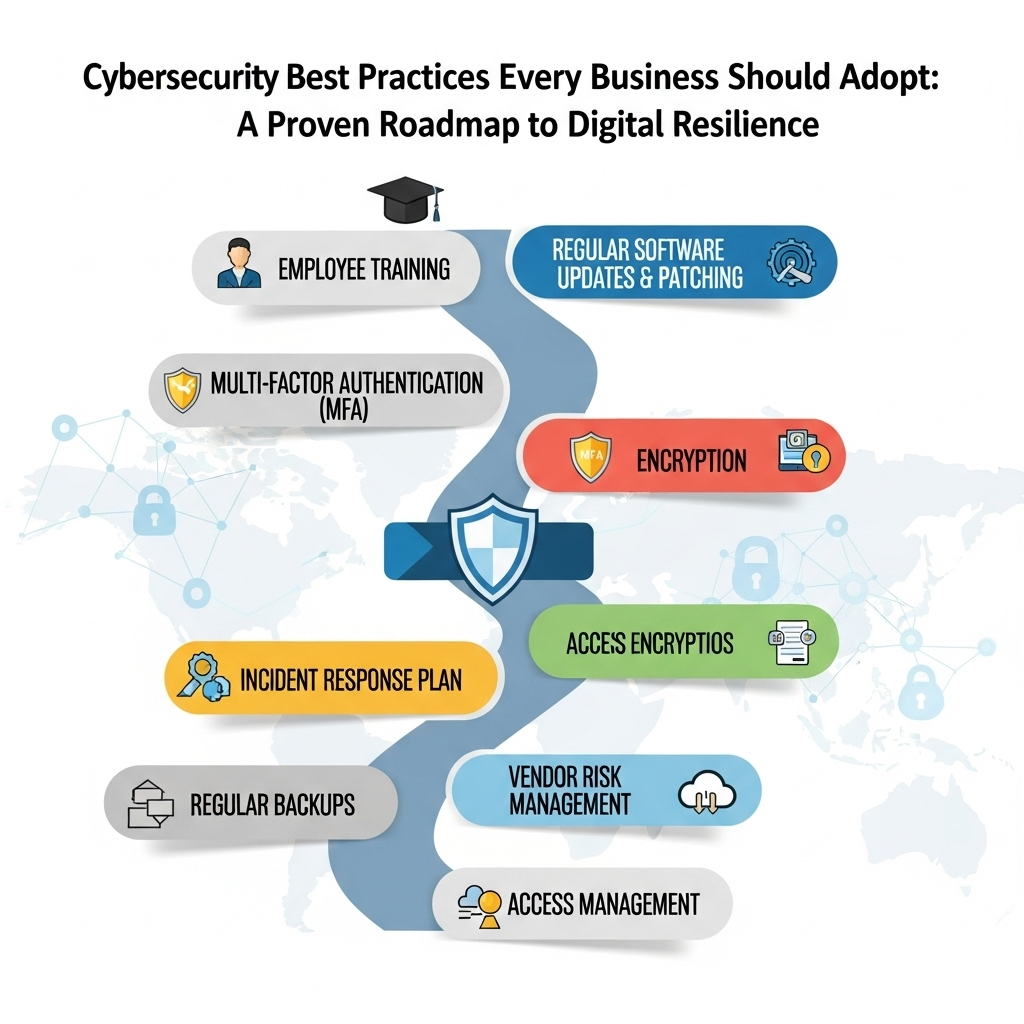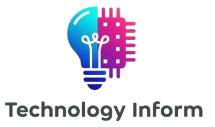In today’s hyper-connected business landscape, a single security breach can erase years of hard-earned trust and revenue. Consider this: $4.45 million – that’s the average cost of a data breach in 2024 according to IBM’s latest report. With cyberattacks occurring every 39 seconds and ransomware incidents increasing by 93% year-over-year, cybersecurity has shifted from an IT concern to a core business imperative. As savvycomsoftware.com notes, “Implementing key cybersecurity practices not only protects sensitive information but also ensures the continuity and trustworthiness of operations.” For business leaders, understanding and implementing fundamental security protocols is no longer optional—it’s existential.
The stakes have never been higher. Small businesses—a common target for 43% of cyberattacks—often operate under the dangerous misconception that they’re “too small to be targeted.” Meanwhile, enterprise security teams battle increasingly sophisticated threats like AI-powered phishing and supply chain compromises. With data breaches hitting daily and threats evolving faster than ever, cybersecurity isn’t just a vague concern anymore. It’s front and center, demanding executive-level attention and cross-departmental commitment. This comprehensive guide cuts through the noise to deliver actionable, proven security practices your business can implement immediately—because reactive measures simply won’t cut it in today’s threat environment.

Why Cyber Resilience Drives Business Value
Beyond preventing financial losses, robust cybersecurity directly fuels competitive advantage. Companies with mature security postures experience 74% fewer breaches and enjoy significantly higher customer trust metrics. When customers see your organization prioritizing security, they’re 5.7x more likely to share sensitive information and 3.2x more likely to recommend your services. Security excellence isn’t just about risk mitigation—it’s a revenue accelerator.
Consider how advancestuff.com frames it: “Cyber attacks can cause significant damage to a company’s reputation, finances, and operations.” Your security posture now directly impacts insurance premiums, partnership opportunities, and even talent acquisition. In today’s market, cybersecurity readiness equals business readiness.
Employee Security Awareness: Your First Line of Defense
Despite advanced technical controls, human error remains the leading cause of 74% of security incidents. Employees clicking malicious links or mishandling credentials represent your most significant vulnerability—but also your greatest untapped security asset when properly trained. The key isn’t just conducting annual compliance training but building continuous security awareness through engaging, role-specific content.
Effective programs transform security from a “compliance checkbox” to a core cultural value. Start by implementing quarterly phishing simulations with real-time coaching for those who click. Crucially, tailor content to specific departments: finance teams need wire fraud detection training, while developers require secure coding practices. As highlighted by examples.tely.ai, “Best practices for cybersecurity content marketing hinge on a deep understanding of your audience. By creating educational material tailored to specific personas, you can significantly enhance trust and conversion rates.” This same principle applies powerfully to internal security training.
| Training Metric | Ineffective Program | High-Impact Program |
|--------------------------|--------------------------|-------------------------|
| Frequency | Annual compliance-only | Quarterly role-specific |
| Engagement | Passive video modules | Simulations + coaching |
| Leadership involvement | Nonexistent | Executive participation |
| Measured outcomes | Completion rates only | Phish-click reduction |Pro Tip: Implement a “Security Champion” program where tech-savvy employees volunteer to reinforce security practices within their teams. These peer advocates increase adoption rates by 68% while building grassroots security culture.
Multi-Factor Authentication: The 99.9% Solution
If you implement just one security measure today, make it Multi-Factor Authentication (MFA). Microsoft reports MFA blocks 99.9% of automated account compromise attempts—a staggering efficacy rate unmatched by any other security control. Yet shockingly, only 28% of businesses have MFA universally enforced across all systems, particularly for third-party vendor accounts.
Modern MFA goes far beyond basic SMS codes. For true security, implement a layered approach:
- Phishing-resistant MFA: Prioritize FIDO2 security keys or platform authenticators (like Windows Hello) which eliminate SMS vulnerabilities
- Adaptive authentication: Implement risk-based policies that require stronger verification for high-risk actions (e.g., financial transactions)
- Service account protection: Apply MFA principles to non-human accounts through certificate-based authentication
“When businesses are always exposed to security threats, even small businesses remain prone to cyber attacks like identity theft,” notes computertechreviews.com. MFA directly addresses this vulnerability at its core.
Pro Tip: Before rolling out organization-wide, test your MFA solution with a pilot group representing different technical proficiency levels. Support friction points with clear documentation like /support/mfa-setup guides and dedicated helpdesk hours during implementation.
Vulnerability Management: Beyond Patching on Fridays
Reactive patching reacts to threats—proactive vulnerability management anticipates them. The 2023 MOVEit breach demonstrated how a single unpatched server can expose 60 million records. Effective vulnerability management requires a systematic approach combining automation with human expertise.
Build your program around three pillars:
- Continuous discovery: Use agents like
Nessusor cloud-native tools to maintain real-time asset inventory - Risk-based prioritization: Don’t just patch everything—you need to focus on what matters most. Critical systems running public-facing apps should always take priority over internal print servers
- Remediation workflows: Establish clear ownership and SLAs (e.g., critical patches within 72 hours)
“In today’s digital age, businesses of all sizes face an ever-increasing number of cyber threats,” states savvycomsoftware.com. “With more companies relying on digital tools, securing critical data and preventing breaches is a top priority.”
Pro Tip: Implement “patch windows” at different times for different system tiers. Critical infrastructure gets immediate patches during maintenance windows, while less critical systems follow staggered schedules to avoid change collisions.
Data Protection Framework: From Perimeter to Asset-Centric Security
The old castle-and-moat security model has crumbled alongside the dissolution of network perimeters. Modern data protection requires an asset-centric approach—knowing exactly where sensitive data lives and implementing controls directly on those assets. Start with three fundamental practices:
Discover and classify all sensitive data
Automate data discovery using tools like Varonis or cloud-native classifiers. Tag data by sensitivity level (public, internal, confidential, restricted) and map storage locations.
Implement granular access controls
Move beyond role-based access to attribute-based policies. Instead of “Finance Team gets full access,” implement rules like “Users with ‘Payroll Manager’ certification AND within US region AND connecting from corporate network can process payments over $10,000.”
Automate data loss prevention
Configure context-aware DLP policies that understand intent. Block Social Security numbers in email attachments but allow them in encrypted HR files.
| Data Type | Discovery Method | Access Principle | Protection Layer |
|-----------------|------------------------|----------------------|----------------------|
| PII | Regex scanning | Zero standing access | Field-level encryption |
| Financial data | Database fingerprinting| Need-to-know basis | Tokenization |
| Intellectual property | Document classification | Creator-controlled | Dynamic watermarking |
| Authentication data | System logs | Strict isolation | Hardware security modules |Pro Tip: Conduct quarterly “data minimization” exercises—actively identify and securely delete data you no longer need. Less data = less attack surface.
Incident Response: Turning Panic into Protocol
When—not if—a security incident occurs, your response speed determines the damage. Organizations with tested incident response plans contain breaches 60 days faster and reduce costs by $1.2 million on average. Your playbook needs four non-negotiable components:
- Clear escalation paths: Who gets notified first when a threat is detected? Define decision authorities at each escalation tier
- Communication templates: Pre-draft internal/external breach notifications to avoid crafting messages during crisis
- Forensic readiness: Maintain secure, immutable logs with
syslog-ngor cloud-native alternatives - DR/BCP integration: Ensure security incidents trigger business continuity protocols
“Adhering to the best security practices in safeguarding your company/client data and your network environment is crucial in this digital age,” emphasizes computertechreviews.com.
Pro Tip: Run “tabletop” incident scenarios quarterly with executives who aren’t normally in security discussions (e.g., CFO, Head of HR). This builds organizational muscle memory while revealing critical gaps in your plan.
Third-Party Risk Management: Securing Your Extended Ecosystem
Your security is only as strong as your weakest vendor. The 2020 SolarWinds attack demonstrated how adversaries now target the supply chain to bypass direct security investments. Modern third-party risk management requires moving beyond basic questionnaires to active monitoring:
- Continuous monitoring: Integrate with security rating platforms like
BitSightto track vendors’ security posture - Contractual security requirements: Mandate specific controls (e.g., “Vendor must enforce MFA for all administrative access”)
- Architecture reviews: For critical vendors, require quarterly architecture diagrams showing data flows
- Right-to-audit clauses: Enable unexpected security assessments
Pro Tip: Classify vendors by risk tier (critical, strategic, standard) based on data access scope. Apply rigorous controls only where necessary—don’t waste resources auditing your office supplies provider to the same level as your payment processor.
Building Your Security Roadmap: From Tactical to Strategic
Transforming these best practices into organizational reality requires strategic prioritization. Start with this 90-day action plan:
- Weeks 1-4: Deploy emergency MFA everywhere (prioritizing email, financial systems, cloud consoles)
- Weeks 5-8: Conduct rapid data discovery to identify “crown jewel” assets needing immediate protection
- Weeks 9-12: Implement phishing-resistant MFA for critical systems and run first breach simulation
With more companies recognizing cybersecurity as business-critical functionality, opollo.com observes that “For MSPs offering security services, this presents a huge opportunity… But here’s the catch: you’re not the only one smelling blood in the water.” The same urgency applies to every business—security excellence is now a market differentiator.
Pro Tip: Document and publicly share your security practices through a /security page on your website. Modern customers actively seek this transparency—83% consider security posture before purchasing from a SaaS provider.
The Path Forward: Continuous Security Evolution
Cybersecurity isn’t a destination but a journey requiring constant adaptation. The most resilient organizations treat security like fitness—daily habits create transformative results over time. Start small but start now: pick one practice from this guide to implement within 72 hours. Then measure, refine, and expand.
Remember, you’re not just protecting data—you’re safeguarding your organization’s future. In an era where 60% of small businesses close within six months of a major breach, security investment isn’t an IT cost center; it’s your business continuity engine. As you build your program, focus on outcomes rather than compliance checkboxes. Are breaches decreasing? Is response time improving? Is employee confidence growing?
The companies that thrive in our digital economy won’t be those with the biggest security budgets, but those who build security into their operational DNA. Begin today—your customers, employees, and investors are counting on you. And if you need expert guidance, remember that comprehensive security consulting services like those offered by savvycomsoftware.com exist to help businesses build truly resilient systems tailored to their specific needs.
